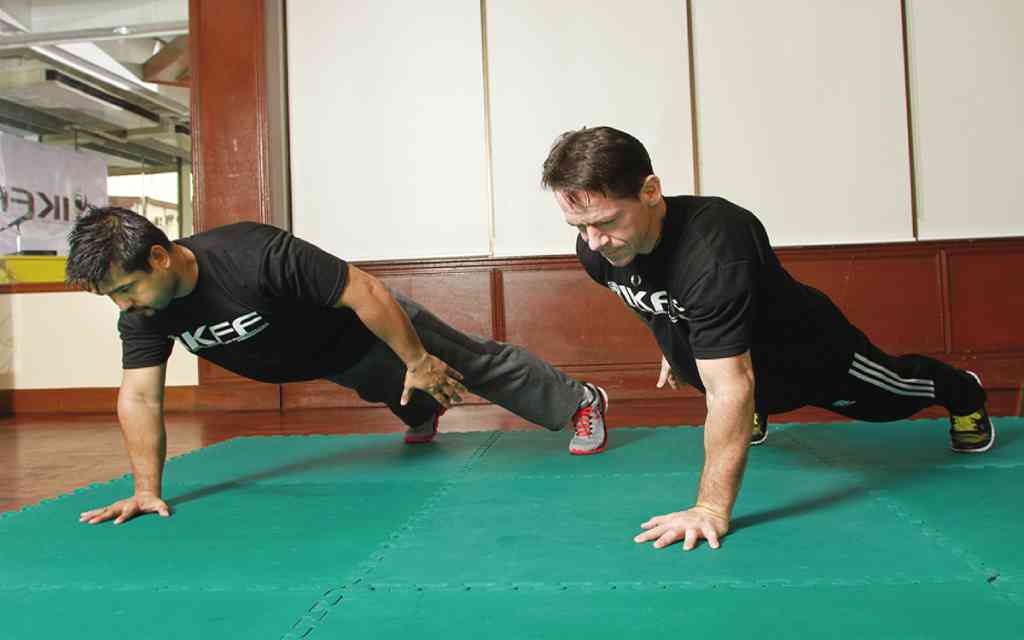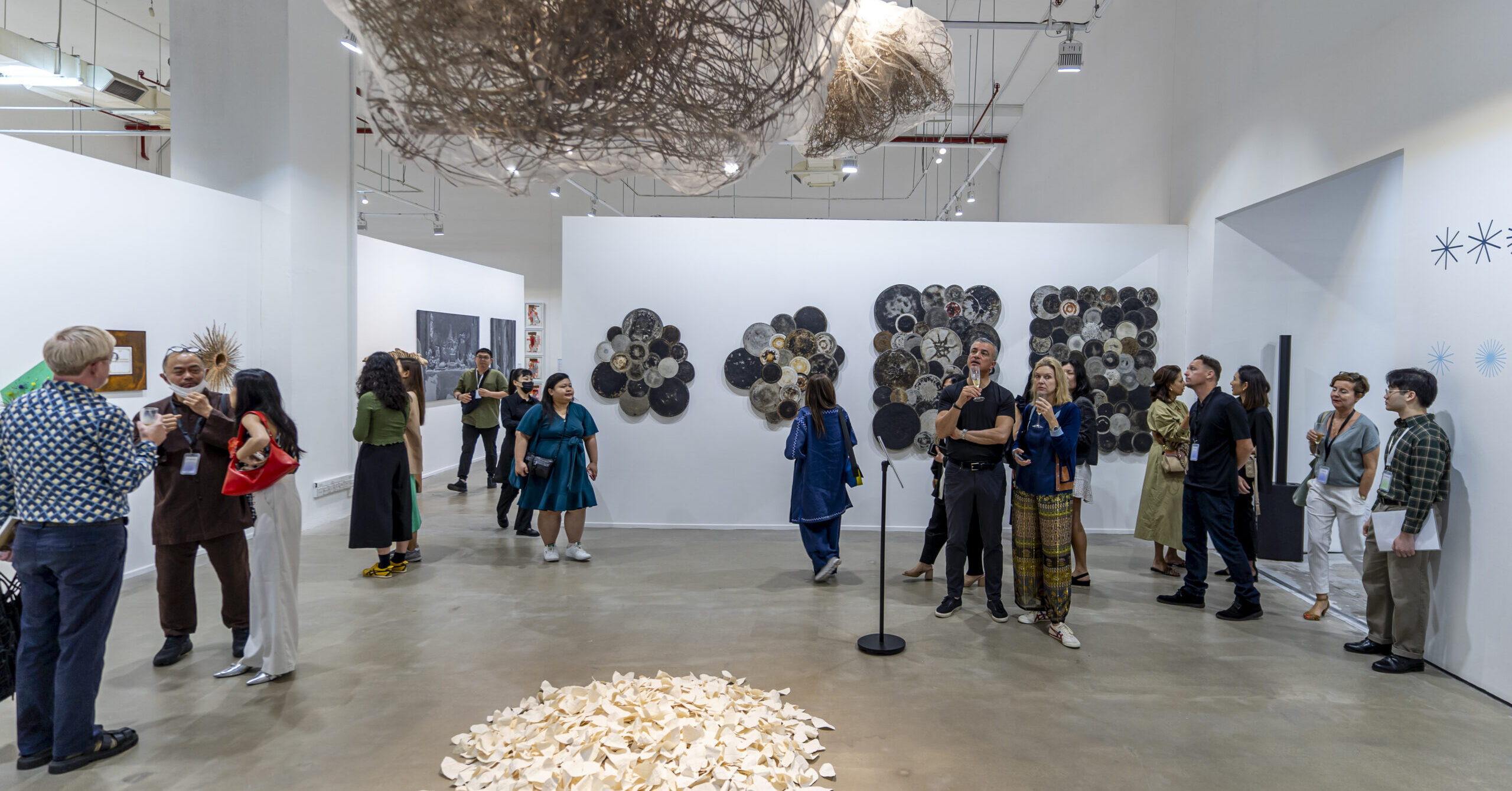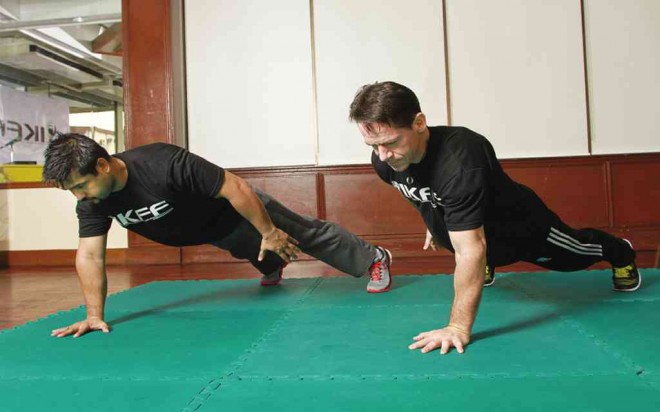
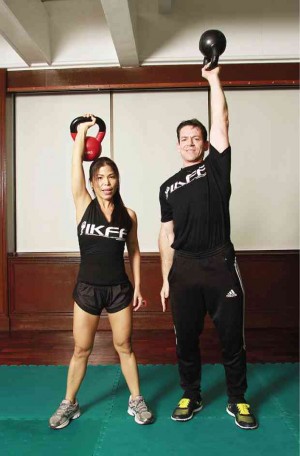
Once used to train Russian soldiers for combat, the kettlebell is now being swung by women to get some curves.
American fitness guru Steve Cotter, touted by Men’s Magazine as one of the world’s fittest men, came to the Philippines to educate fitness professionals on the growing trends—kettlebell, bodyweight and functional movement.
A high-pressure urban lifestyle, coupled with sitting for long hours at desks and in cars or public transportation, can lead to poor posture, muscular imbalances and bad habits in moving. The kettlebell can help individuals cope with stress and enable them to get in shape in less time, and with little or no equipment. They can then perform their daily activities with more ease.
Cotter observed that kettlebells, which look like an iron bowling bowl with a handle, exploded in the last decade.
“The goal of most women is to gain adequate strength to do their daily activities, such as carrying something or lifting their children. The kettlebell is for toning, burning fat, increasing lean tissue and keeping joints mobile so there’s no low back pain. It’s faster and easier than other methods today. The kettlebell develops the type of body that people are interested in—leaner and athletic, versus the bulky body. Combined with Pilates or yoga, it will make their fitness program more holistic,” said Cotter.
Toning and burning
“What makes it appealing is that it’s more efficient in getting bang for your buck. You can do more work in less time. In the modern world, people are quite busy. They may not be able to commit one or two hours at the gym. With kettlebells, the utility is high. It doesn’t take a lot of space or fancy equipment. You can do it at home or in the office,” he added.
The kettlebell workout combines the benefits of weight training and aerobic conditioning.
“In the conventional model, people would do weight resistance to increase bone density and muscle toning and then the aerobics for cardiovascular fitness. Doing them separately takes a lot of time,” Cotter said.
“With kettlebells, we combine weight resistance for strength training and muscle-shaping qualities and anaerobic conditioning because it can be intense,” he pointed out.
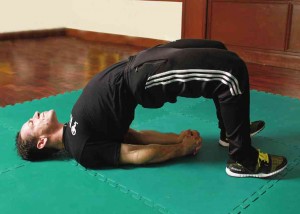
Unlike in bodybuilding or weightlifting, in which the exercises move in straight lines, the kettlebell is swung in different directions that follow the body’s natural movement patterns.
“Bodybuilding tends to focus on isolation—you work one muscle at a time. It breaks the body into different components. In the real world, that’s not how the body actually functions in daily activities. The body works as an integrated unit which includes the muscular and the nervous system working together.
“With kettlebells, you use the whole body as a single unit. You’re moving in circular movements, which rely more on inertia and momentum. Inertia is a principle of physics—Newton’s Second Law of Motion states that a body set in motion stays in motion. We utilize this inertia to keep moving with the kettlebell in a rhythmic cadence. Therefore we can sustain the movements for a longer period of time. We can generate a greater volume of work. This leads to a higher level of fitness,” explained Cotter.
Consequently, what would take two hours on the treadmill or bicycle and going through all the barbells and dumbbells can be accomplished in less than 40 minutes with the kettlebell.
Three movements
Women over 45 can benefit from the kettlebell. “It is becoming popular among women because it builds lean muscle tissue and works a lot on the rear end. These are the muscles that women tend to be interested in shaping. The basic movement of the kettlebell is the swinging movement. You swing it between your legs and it’s tremendous for working, toning and strengthening the hamstrings and the butt,” said Cotter.

strengthening the shoulder and relieving stress. PHOTOS BY NELSON MATAWARAN
Women can achieve more by doing basic compound movements, exercises that involve more than one joint or muscle group rather than isolated movements.
“These three movements—squatting, pressing and pulling—which work the large part of the body, should be the foundation,” said Cotter.
He pointed out, as an example, that the leg extension machine and the squat take the same amount of time and effort. But while the leg extension merely focuses on the muscles around the knee joints and the front of the thighs, the squat strengthens the legs and lower back and tones the derriere and abs. “The squat will do more for bone density,” he said.
For the upper body, the shoulder press works the triceps, the muscles around the shoulder, the upper chest and back more than repetitive raising dumbbells on the side or the tricep pushdown on the pulley machine.
“You get faster results if you do free-standing, pressing movements like the push-up, bench press or military press. When you use your body, you use the core musculature so you’ll be working on the abs and the lower back. On the machine, you don’t have to stabilize because you are standing against a backrest. The machine does most of the work,” he said.
“The pulling movement like the deadlift—where you pick up the weight from the ground, stand up with it and place it back down—is excellent for working all the back muscles. These three basic movements of the squat, standing press and deadlift exercise the whole body.”
As the upper arms slacken with age, Cotter recommended the overhead press with the kettlebell which activates the triceps and shoulders.
Cotter observed that the middle-age spread or thickening of the waist is sometimes addressed with the conventional side bends. This kind of spot reduction is a myth.
“Muffin tops occur as we age because the body’s metabolism slows down. The most effective way to keep the metabolic rate high is to create heat in the body and burn calories more even when we are at rest. The best way to do that is resistance training with the kettlebell, barbell, sandbag or rock.”
Positive attitude
If pumping iron or swinging a kettlebell doesn’t appeal to you, bodyweight exercise is an alternative to using exercise apparatus. Cotter’s system integrates Eastern methods such as breathing and meditative movements with Western sports and strength conditioning. The exercises instill the mindfulness of the East with the muscle power of the West.
“Deep breathing in the beginning enables us to relax and focus… Awareness of how we use our body through space and cultivate graceful movements are combined with strength-building exercises. We don’t need a gym with a lot of equipment. We can use our bodies to create a workout. With this knowledge, there is no excuse or no reason why we can’t get some exercise wherever we are,” he said.
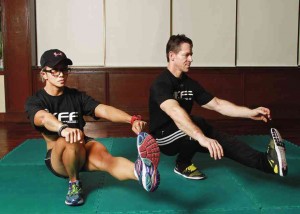
Cotter was a martial arts trainer before he became an early adapter of the kettlebell. “Kettlebells use movements that are complementary with martial arts. There’s the whole body involvement, attention to breathing and coordination,” he said.
As the founder and president of the International Kettlebell Fitness Federation (IKFF), he has visited over 60 countries to teach fitness professionals not only on the kettlebell workout, but on mind/body and attitudinal training.
As a frequent traveler, Cotter has to adjust to different time zones and teach all day. Despite the irregular schedule, the 44-year-old educator stays energetic by using the mind over the body. “I have a positive attitude. I don’t allow negative thoughts to control my mind. If I think, ‘I’m tired!’ I won’t be able to do my work effectively. I have to set a good example for the professionals whom I’m educating. It’s important not to let our personal difficulties have a negative effect on others. I’m trying to bring the positive energy.
“Although I’m known for physical exercises, I’m doing a lot of motivation and inspiration. We have to get people to believe in themselves and feel motivated for them to want to try it. Otherwise it’s a demonstration of ‘Look! I can do all these things.’ It doesn’t do anything for them. Teaching is about inspiring others, and getting them to do things.”
For details on kettlebell and functional training, contact Jonnel Cruz of iFit Pro at 0917-8414848.

